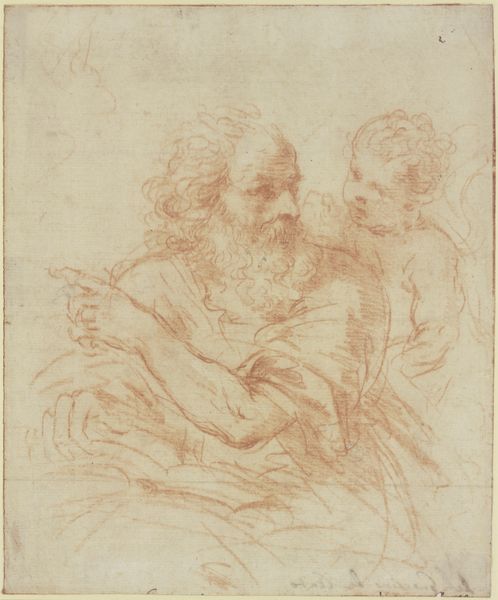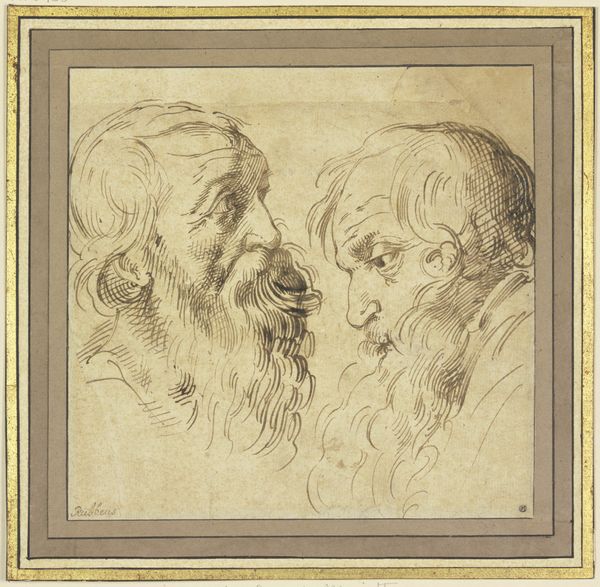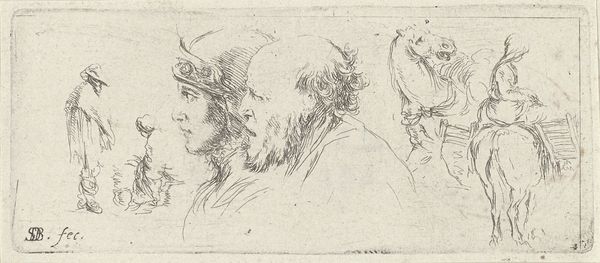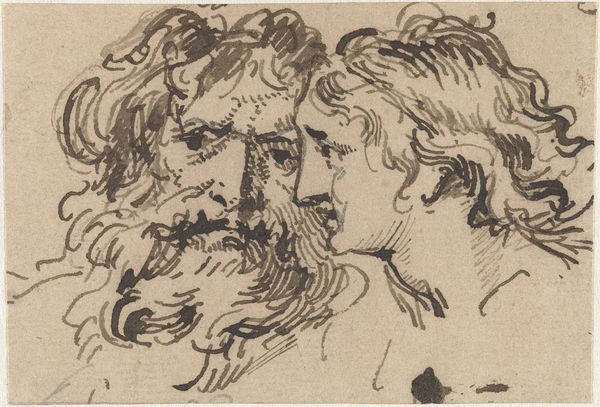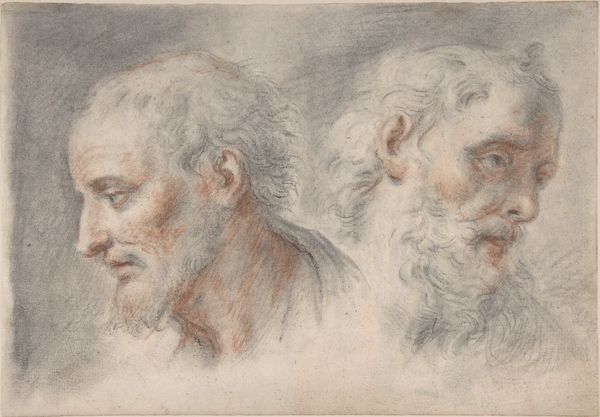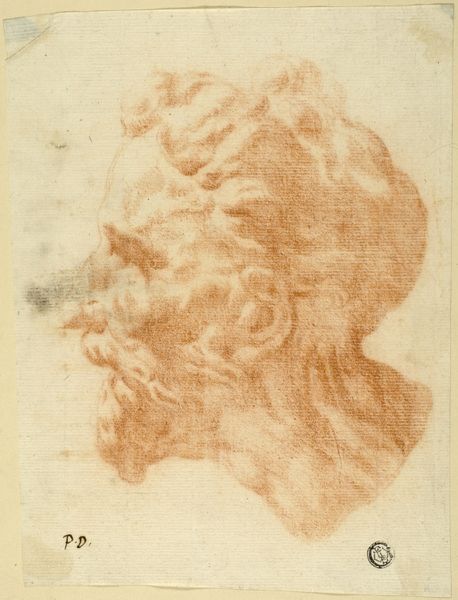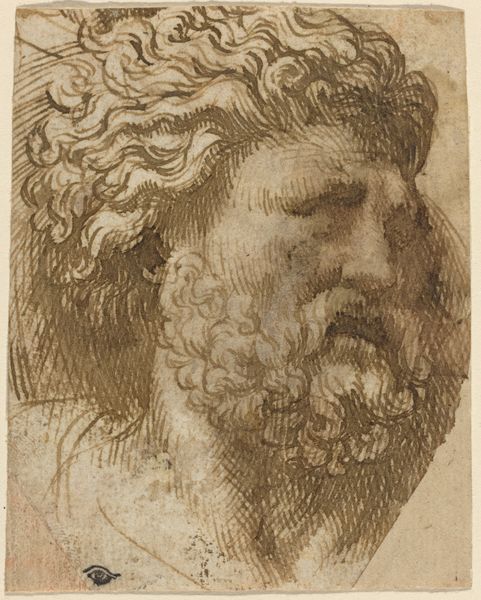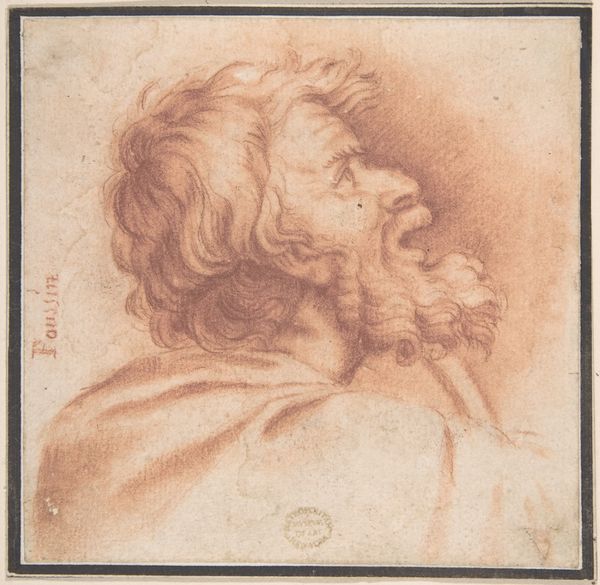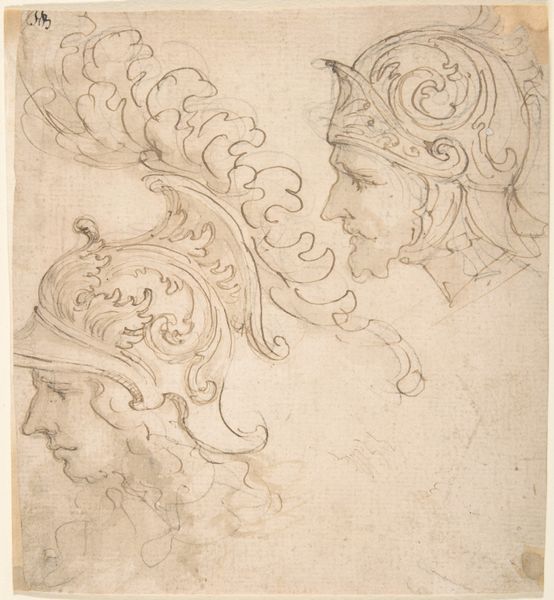
drawing, paper, chalk
#
drawing
#
toned paper
#
light pencil work
#
baroque
#
french
#
pencil sketch
#
possibly oil pastel
#
paper
#
coloured pencil
#
coffee painting
#
underpainting
#
sketch
#
chalk
#
14_17th-century
#
watercolour illustration
#
pencil art
#
watercolor
Copyright: Public Domain
Editor: Here we have "Zwei Köpfchen und eine Hand" - Two small heads and a hand - by Robert Nanteuil. It looks like a sketch done in chalk or pencil on toned paper, currently at the Städel Museum. I’m struck by the raw, almost unfinished quality. What can you tell me about the artist's process here? Curator: Consider the paper itself. Toned, suggesting a conscious decision to work *with* a pre-existing ground rather than create one from scratch. This immediately places the work within a context of resourcefulness, doesn't it? What dictates the choice of chalk or pencil in this context? Availability? Cost? Skill? Editor: Maybe both, the materials available would inform his style, and how fast he could work. Did the use of cheaper or more readily available materials like chalk challenge any artistic hierarchies at the time? Curator: Absolutely. Think about the academies and their emphasis on oil paint, on laborious, "finished" works. A sketch like this, rapidly executed, using easily accessible materials, disrupts that entirely. It democratizes the artistic process. How does that impact its value? Editor: It makes it feel more accessible, more about the skill of the artist and less about expensive materials. It sort of brings the artistic practice back down to earth. It speaks of labor but also of spontaneity. Curator: Precisely. And the 'unfinished' quality highlights the act of creation itself. We're seeing not just a portrait, but the *making* of a portrait. Do you see any specific implications stemming from the combination of cheaper materials along with apparent haste or imperfection? Editor: Well, the quick lines and accessible materials might reflect a growing merchant class, allowing art to depict subjects outside traditional, wealthy patronage. I suppose artistic ability would therefore become even more valuable as compared to how 'complete' the final work appears. Curator: Exactly. So we've moved beyond mere aesthetic appreciation. We’ve unpacked questions of production, social class, and the very definition of "art," all through the humble materials of chalk and paper. Editor: I see! Thanks! Thinking about the materials used really opened up a much broader understanding for me!
Comments
No comments
Be the first to comment and join the conversation on the ultimate creative platform.
